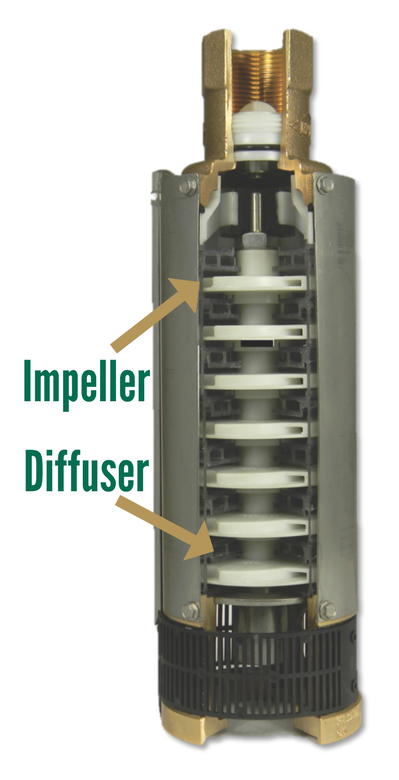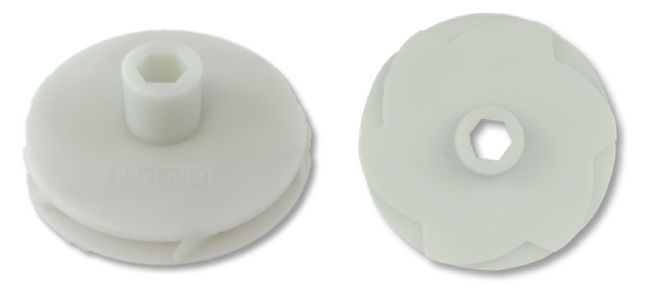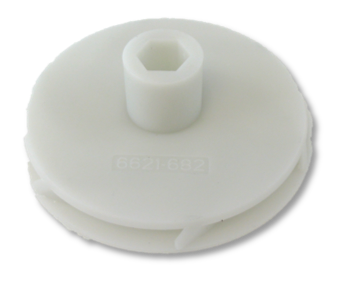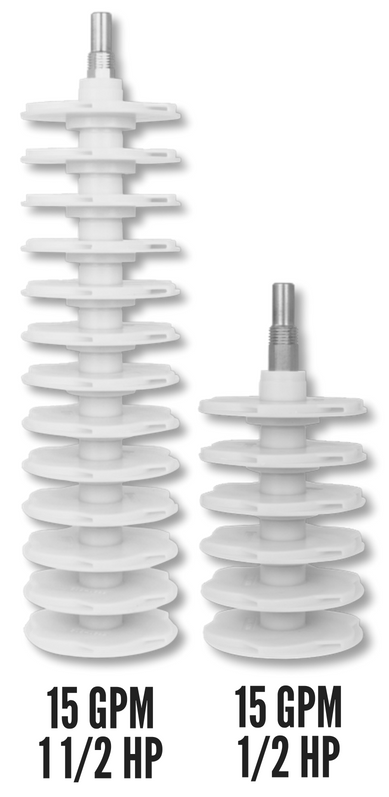All You Need to Know About Submersible Pump Impellers and Diffusers

All You Need to Know About Submersible Pump Impellers and Diffusers
Submersible pumps are one of the most popular types of pumps used for private well systems, light commercial, and irrigation applications. Due to their high demand, A.Y. McDonald carries a full line of submersibles. As a leading manufacturer in the pumps industry, we know the components that make up a submersible pump and their effect on the system – starting with the impeller and diffuser.
Making up the heart of the submersible pump, there is a lot that can be said about the impeller and diffuser. First off, the impeller is necessary as it moves water through the pump while the diffuser directs water to the next stage. See below for additional features of each component:
|
Impeller |
Diffuser |
|
|
When an impeller and diffuser are placed together, this is referred to as a stage. These “stages” are then stacked in order to achieve the desired pressure for the application. Each stage adds pressure, building on the previous stage while each additional stage requires additional power but does not increase flow.

Both the submersible pump’s impeller and diffuser are typically made of plastic or stainless steel. A suitable material would include one that has a long life in a corrosive environment. It must be chemical resistant, stress corrosion cracking resistant, impact resistant, and does not contaminate the water system.

In order to prevent wear, the impeller needs to have a tight fit on the shaft. The impeller hub controls spacing from the diffuser. The fit between the impeller and diffuser needs to be optimized but if the diffuser fits too tight to the impeller, it limits recirculation and can’t past solids. If the diffuser is too loose, it increases recirculation and causes a loss of efficiency.
When it comes to flow and pressure of a submersible pump, there are a lot of variables to consider in relation to the design and size of the impellers and diffusers. For more information about impellers, diffusers, and additional components of the submersible pump, enroll in our Submersible Pump Components and Design AYU course, call our customer service department at 1-800-292-2737, or fill out a contact form on our website.



